“Five Frames of Film Ferrania in Finland” would have been a good title for this post, but I wanted to share a few more than five. “Five Frames of Film Ferrania in Finland with a Flexaret” would be even better, but let’s not get carried away (besides, I don’t have a Flexaret). So here we are, with a title that’s only mildly alliterative. Oh well.
Choosing P30 for Finland
Earlier this year, when I wrote about photography words in other languages, I learned from a reader’s comment that the Finnish word for bokeh – or at least a word they sometimes use to convey the idea of photographic blur – is sumea, which means “non-sharp or opaque-like”. I liked the sound of the word, so when I went to Finland in August, I decided to do a sumea-themed photo project.
Film Ferrania P30 is an ISO 80 B&W film, available in 35mm and 120 format. It’s a unique emulsion (not a rebranded version of an existing film), manufactured by Film Ferrania in Ciaro Montenotte, Italy. (At the end of this article, I’ve included some history and other info about the film.)
I bought the roll of P30 a couple of years ago, simply because I like to try new and unusual emulsions. Being a relatively slow film (ISO 80), it seemed like a good fit for the sumea project. The forecast when I was in Finland was for sunny weather, and with a slow film, I figured it would be easier to open up the aperture. I hadn’t used this film before, but the reviews and samples that I’d seen suggested fine grain and high contrast, which was fine by me.
P30 is marketed as a panchromatic film, but according to the Naked Photographer’s review, it has orthochromatic characteristics (my article on spectral sensitivity goes into this in more detail). The film doesn’t have DX coding, but that’s obviously not a problem with a fully manual camera like the Leica M3.
How I shot and developed Ferrania P30
I used a Leica M3 with two lenses: a Voigtländer Ultron 28mm f/2 (Vintage Line Aspherical VM) and a Leitz Summicron 50mm f/2 (version 1, collapsible). I’ve noted which lens I used in the individual photo captions.
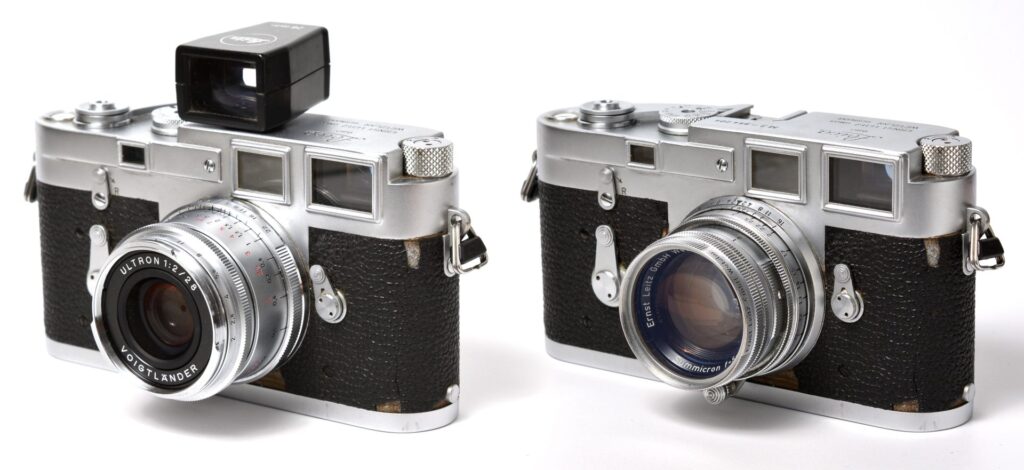
I rated the film at box speed (ISO 80). But take what I say with a pinch of salt, because I just shot the roll for fun, without controlled experiments or noting my settings as I might have done for a proper review. Moreoever, the Leica M3 is a fully manual camera with no light-meter, and my own metering practices – when I’m not doing a proper review – are quite slapdash. Sometimes I use a free phone app, and sometimes I just guess. So if a photo is underexposed, for example, it’s hard to say for sure if it’s due to the film, or due to my inaccurate metering or guesswork.
Having said that, my feeling is that Ferrania P30 is best exposed at around ISO 50 (in other words, overexposing by 2/3 stops), to avoid crushing the shadows while still retaining highlight detail. This also chimes with other reviewers’ recommendations, such as Gregory Couch who tends to apply +0.3 or +0.7 exposure compensation, and Em (Emulsive), who says “overexposing the film by a single stop can yield some pretty powerful results”.
Overexposure (relative to box speed) also gives you a little leeway, should you accidentally underexpose. Because in my experience, if you rate P30 at ISO 80 and happen to underexpose, you’ll end up with very little detail on your negatives.
I developed the film in Ilford ID-11 (1+1) for 13.5 minutes, as recommended on Ferrania’s datasheet (PDF). The negatives were digitised with a Nikon D5200 and Nikkor AF-S DX Micro 40mm f/2.8, using pixl-latr as the film holder. I lightly edited them in Photoshop, mainly just cropping and curve adjustments, and some local edits with layer masks similar to what I’d do in the darkroom.
Most of the photos in this article are negative “scans”, but I also made a few darkroom prints which turned out well. The one below is on Ilford MG RC paper, developed in Ilford Multigrade.
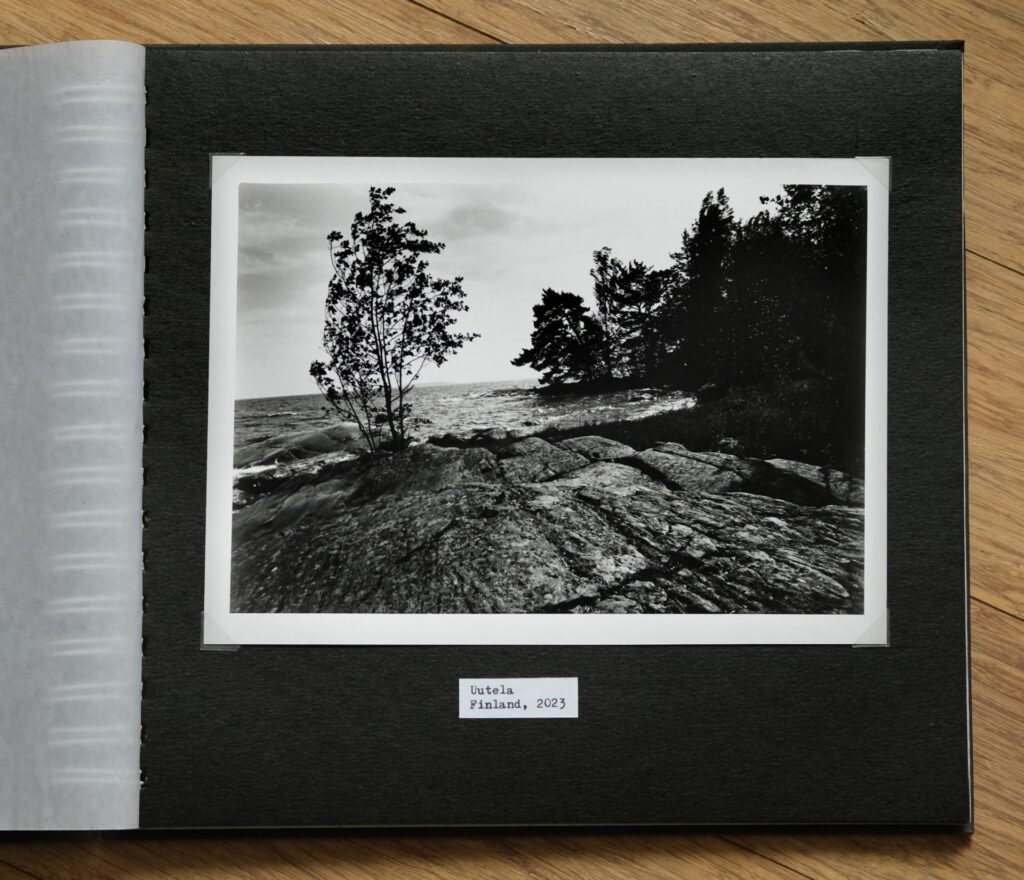
The photos
I went to Finland for an academic conference, and extended my stay by a few days for a holiday with my friend. The conference was in Joensuu, which is a city in Eastern Finland, close to the Russian border.
Joensuu is 4.5 hours by train from Helsinki (Finland is bigger than I thought). I took this photo from the train window.
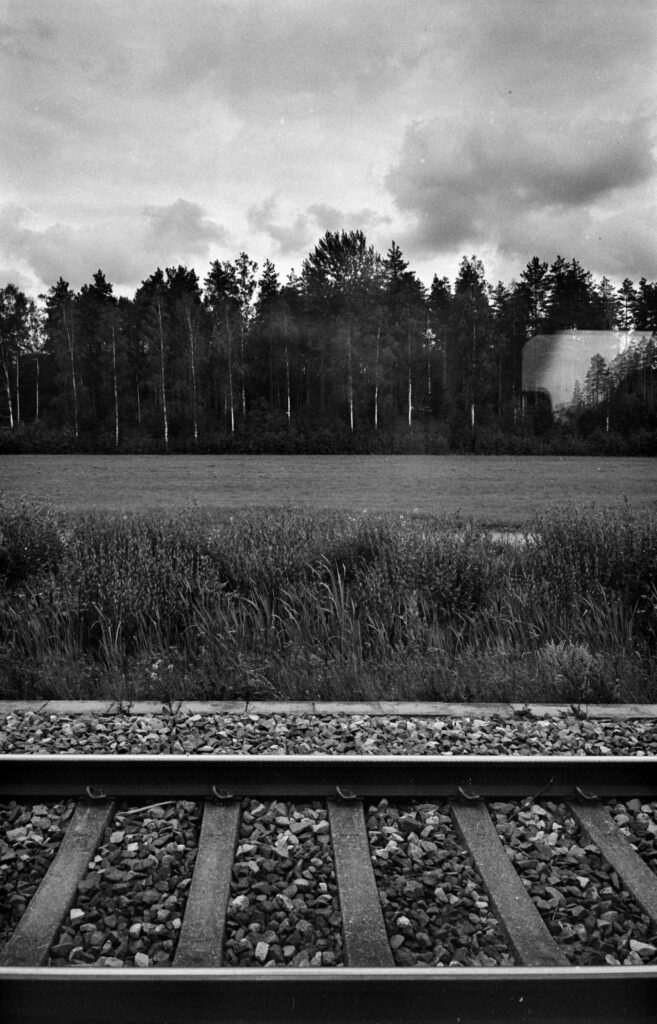
When I took the first photo, my lens was a few inches from the windowpane. I then thought of holding it right up against the windowpane to eliminate reflections, and also waiting for a vehicle to move into the frame (below). The photo above has a reflection on the right – but on reflection (heh) I don’t mind it. It’s a little clue that the photo was taken from a train window.
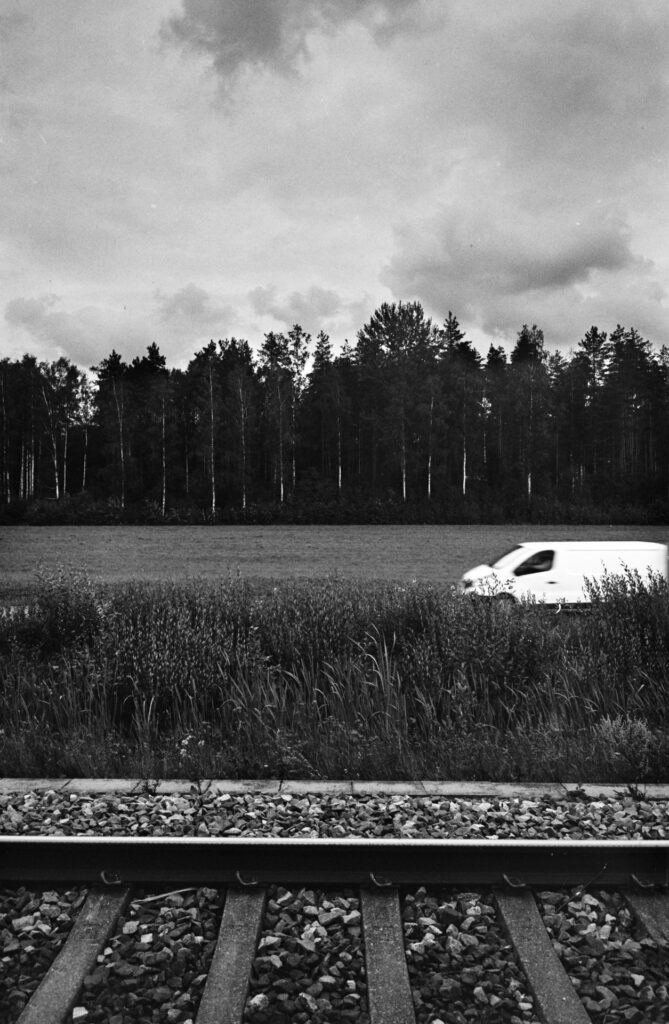
The next two photos were taken during the conference. In breaks between sessions, I would sit in the lounge, where the blinds cast pretty shadows on the furniture.
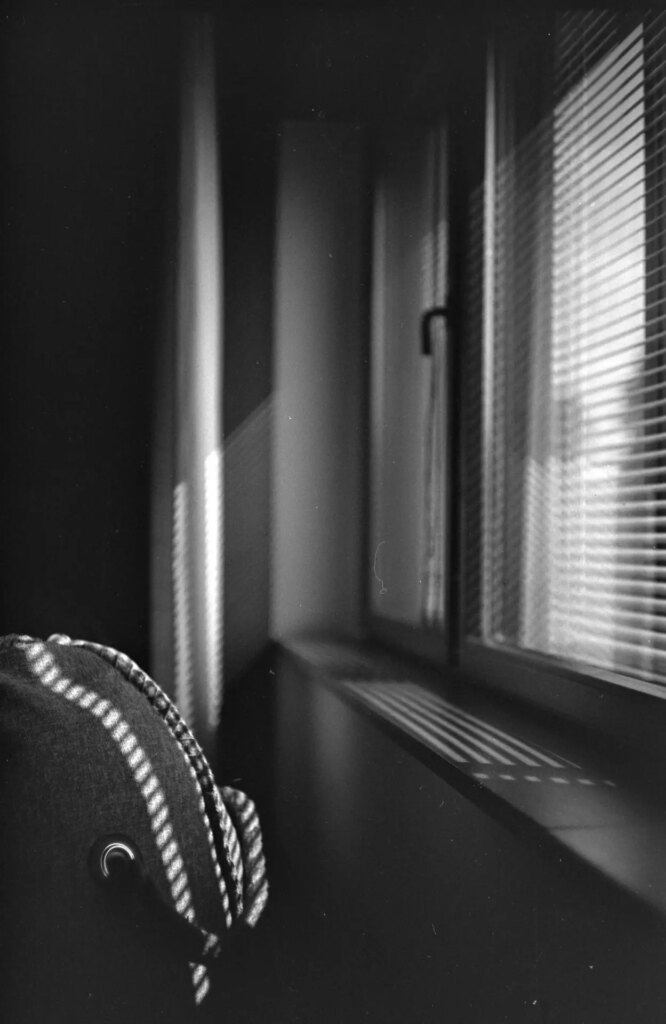
The photo above was shot wide open at f/2, because I was thinking about my sumea (blur) project. But I also had a feeling that this particular photo would be better with less background blur, so I took a second photo (below) at f/5.6. As expected, I like the second one more.
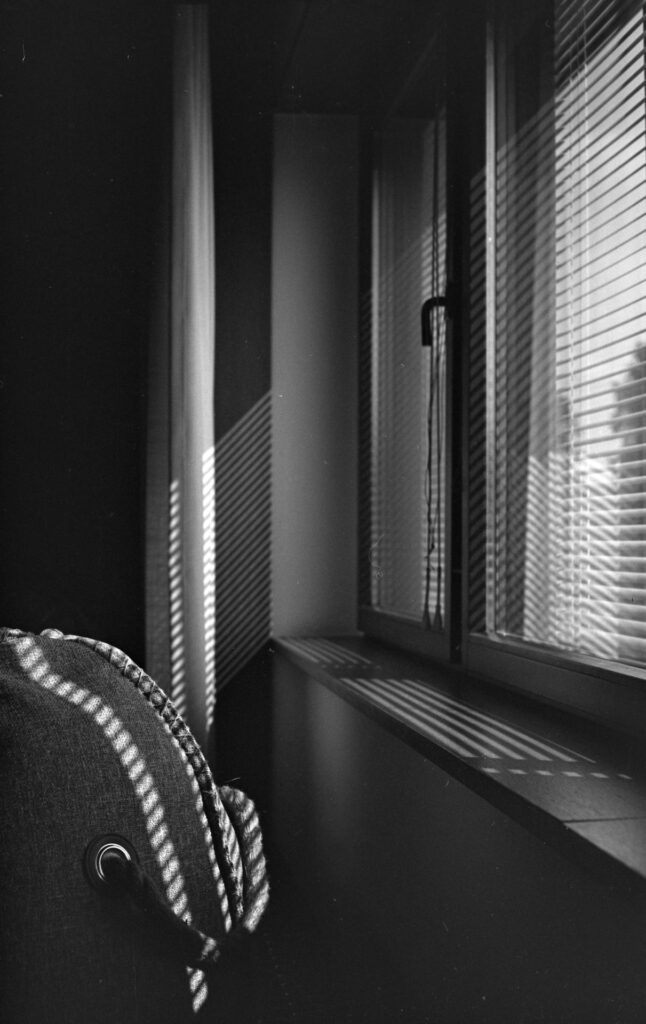
In fact, my sumea project didn’t work out in the end. The photos which I deliberately shot wide open – for shallow depth-of-field and blur – turned out okay but not great (with one exception, which I’ll come to later). First, here are three of the average shots. They were all taken at Uutela Nature Park, at f/2 or f/2.8.
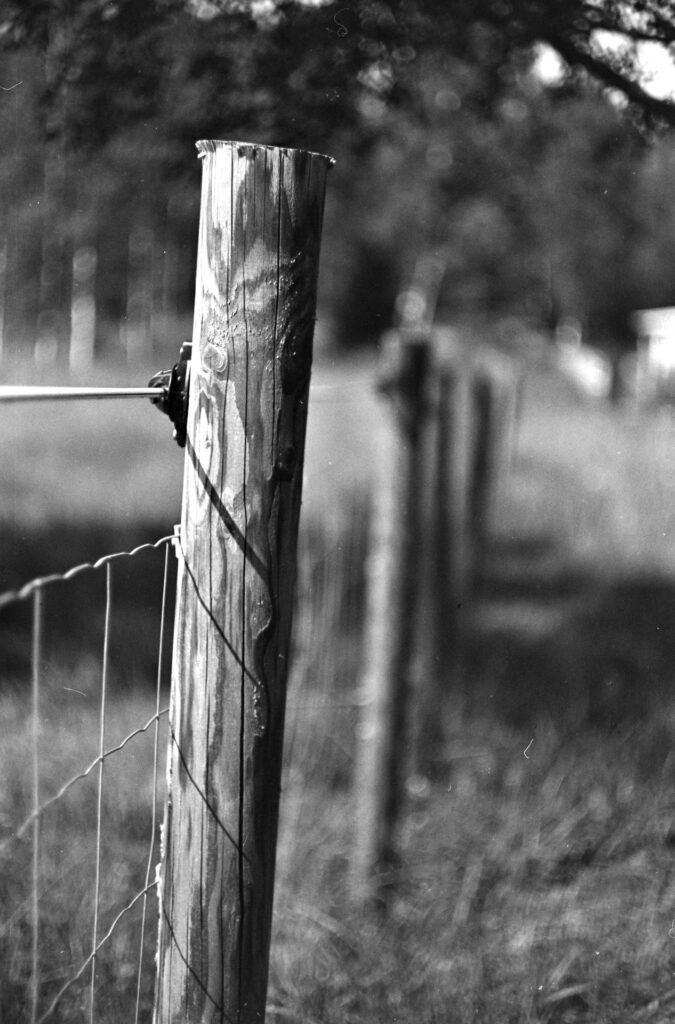
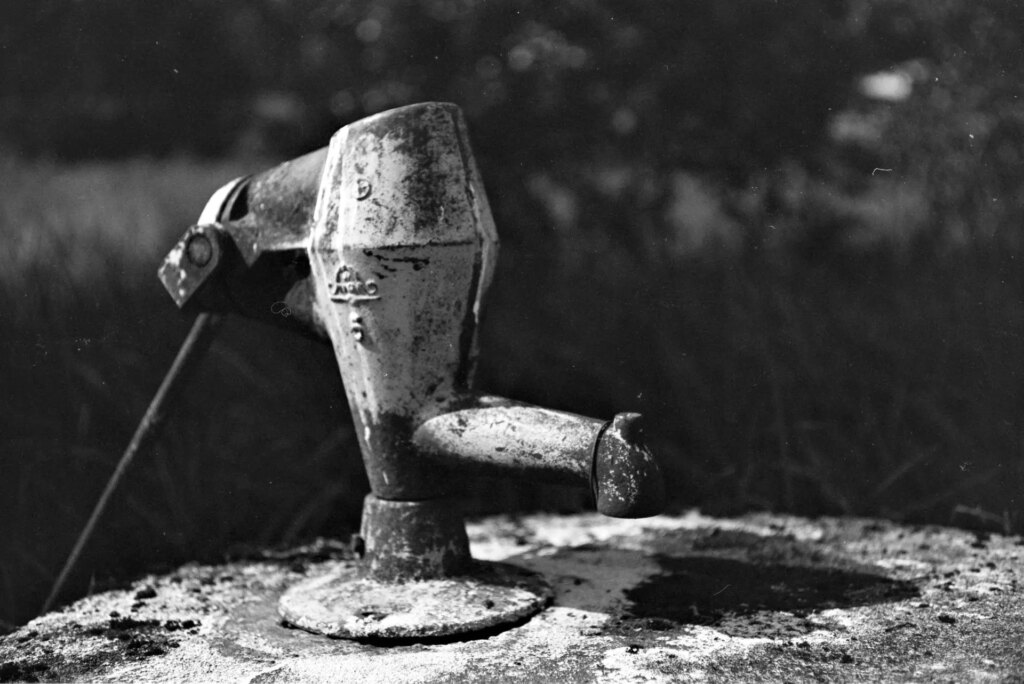
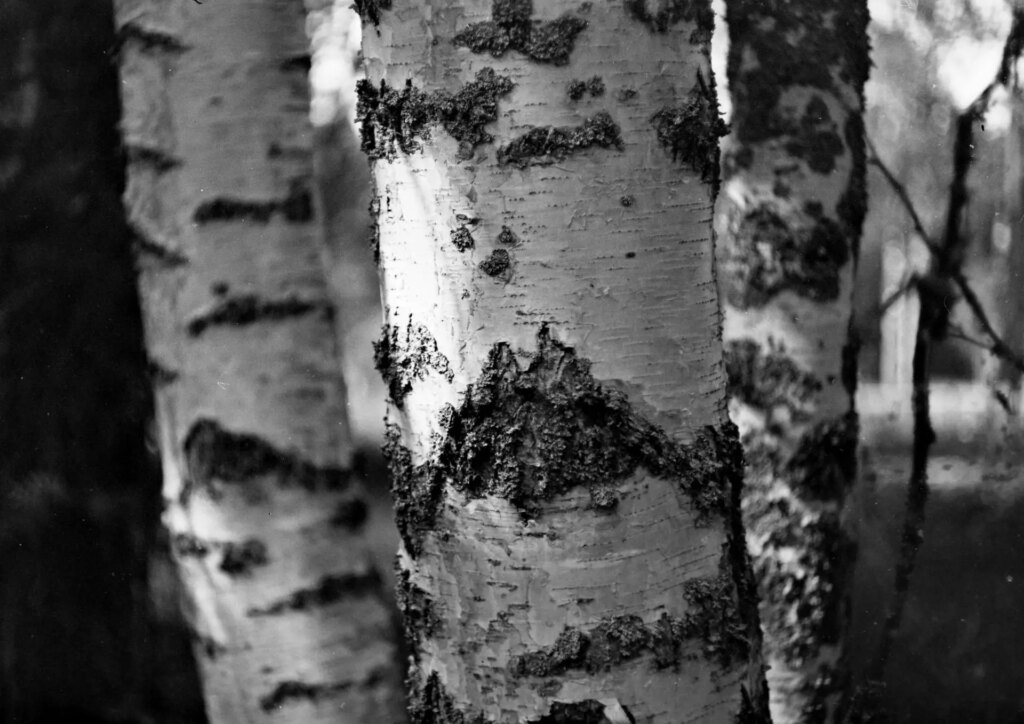
The next photo, also from Uutela Nature Park, is the opposite of a sumea shot. At f/16, with the Voigtländer 28mm lens focused at 2 metres (hyperfocal distance), everything from 1 metre to infinity is in focus.
Tilted horizons are a pet peeve for some photographers, but if I have to choose between a textbook horizon and cool rock texture, the rock texture wins every time.
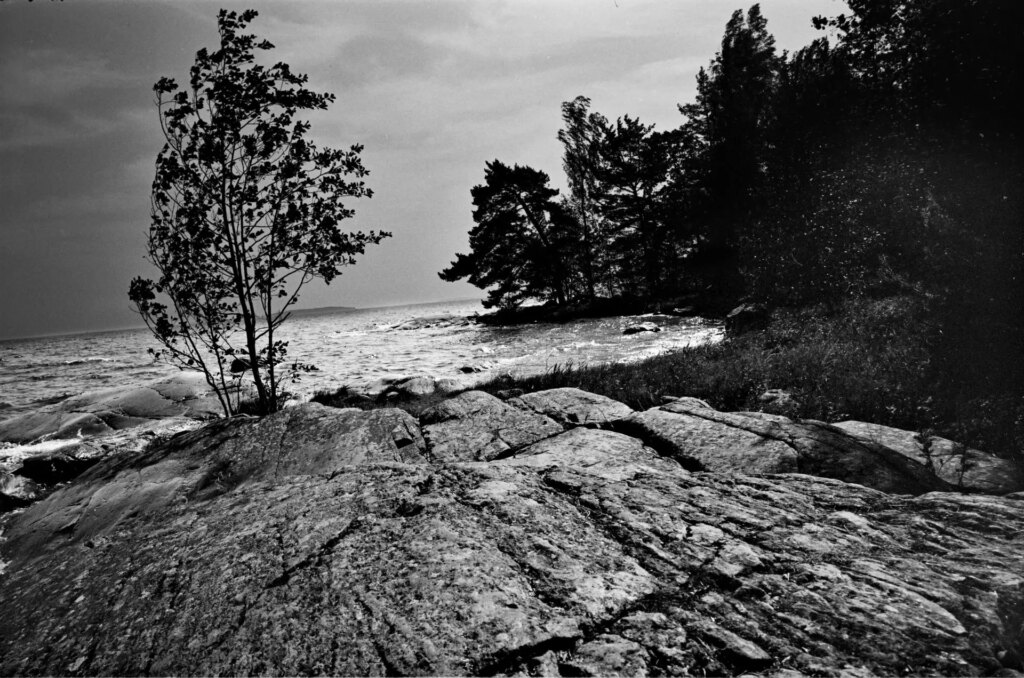
Here’s the only sumea shot that I do like, from the Museum of Contemporary Art Kiasma in Helsinki. In this photo, the blur does something – contributing to an air of mystery, or even menace (the woman’s phone looks almost like a gun) – as opposed to being just, you know, blur. This particular negative had some dust on it, but I didn’t clean it up; I think it goes with the vibe, possibly even adds to it.
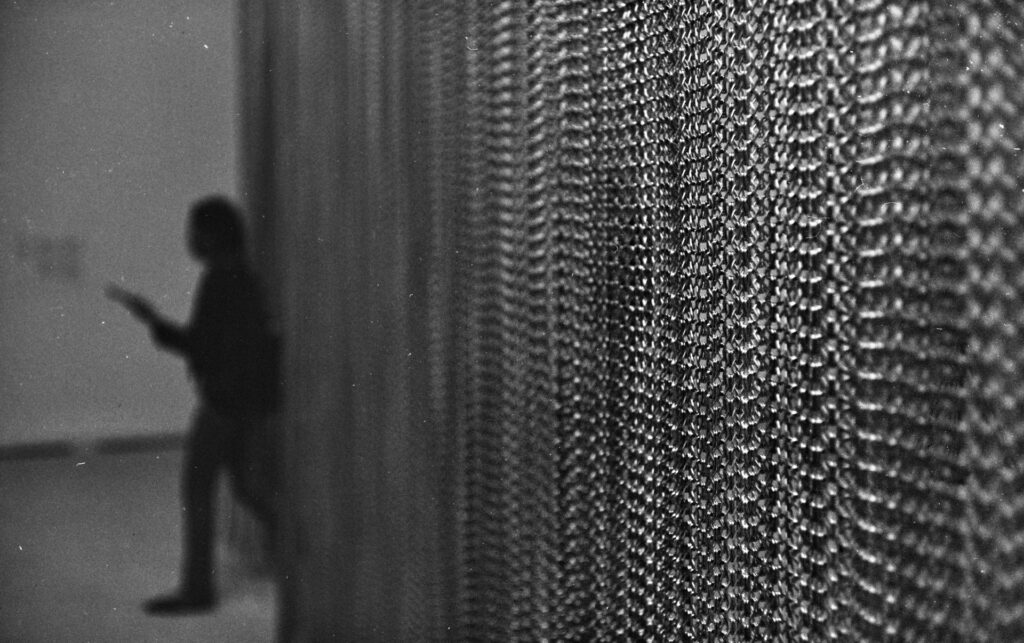
The next three photos are also from the Museum of Contemporary Art. The museum – Helsinki as a whole, for that matter – has lots of interesting architecture. A wide-angle lens emphasises the leading lines.
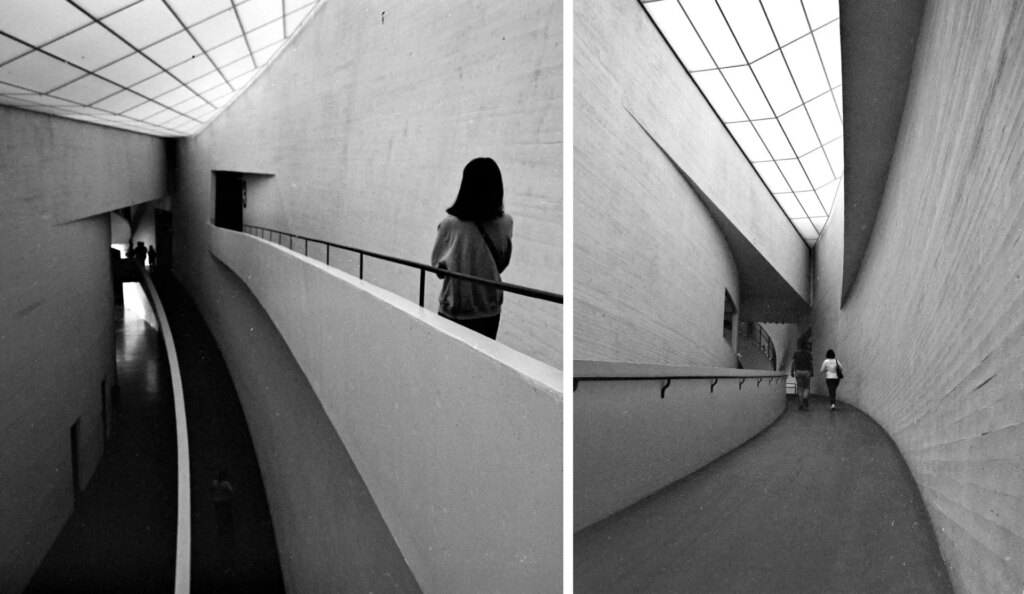
The two photos above are not bad, but I prefer the one below. It’s tilted, but I opted not to fix it. I think it adds to the slightly unsettled, off-kilter look. And as I said, I am tolerant of tilted horizons.
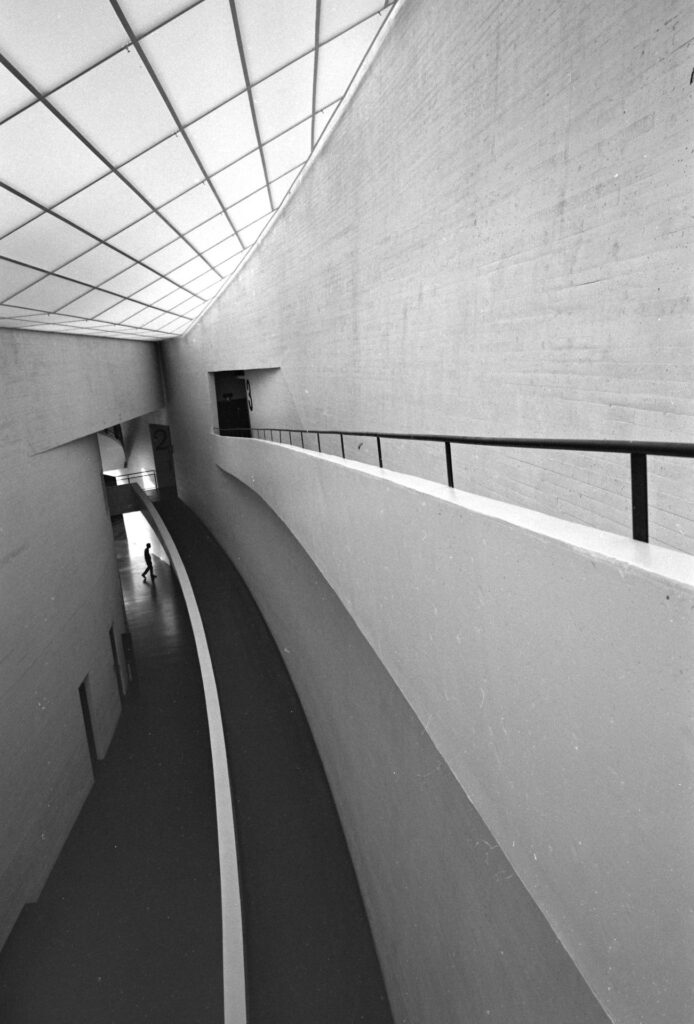
Ferrania P30 is indeed contrasty, but with a bit of overexposure, it can still handle high-contrast situations. I took the photo below in the Vuosaari neighbourhood on the outskirts of Helsinki. It was a clear, bright day (see the hard shadow on the ground), and I was shooting against the light. I overexposed by about a stop, hoping to get some shadow detail; in light of Ferrania’s high-contrast reputation, I had little hope for the highlights. Nevertheless, the negative has highlight detail too.
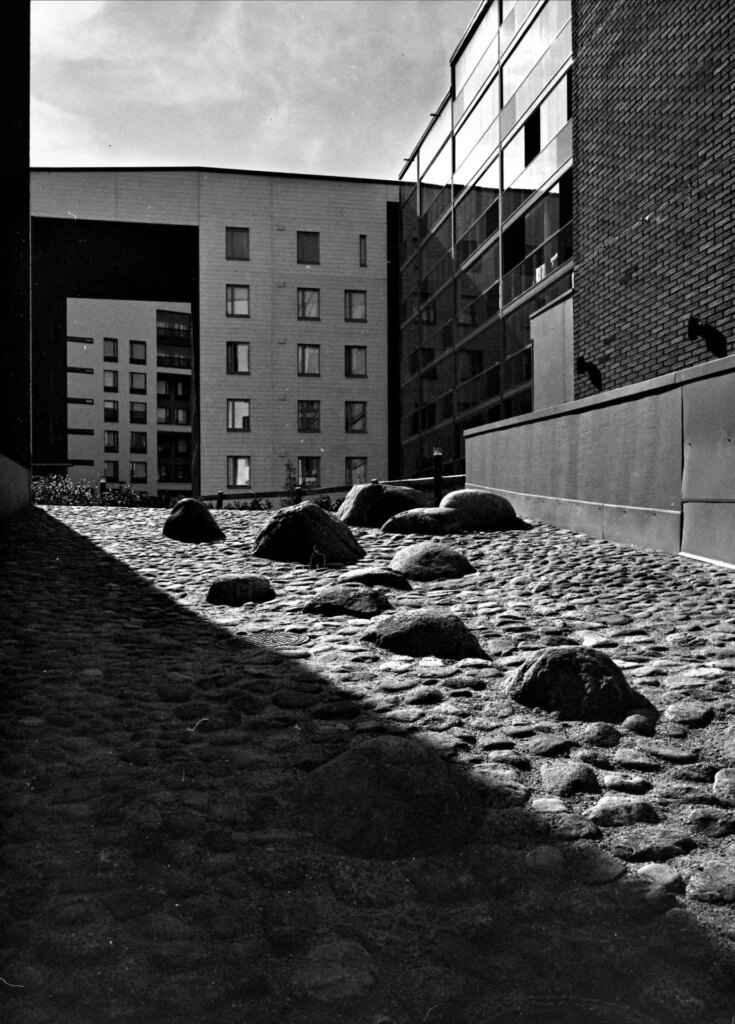
In relatively low-contrast situations – like the photo below, of sculptures on the Pohjola Insurance building, shot on a cloudy afternoon – P30 looks almost like HP5.
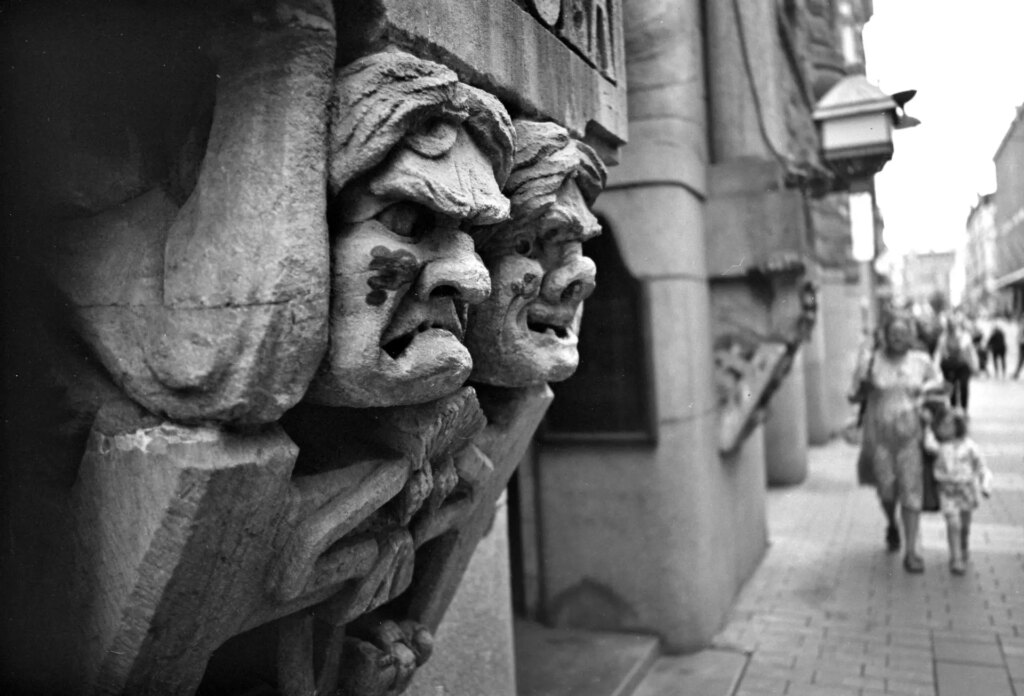
The last two shots are from Helsinki’s Lasipalatsi Square (more cool architecture), again using a small aperture for deep focus. I took this photo first:
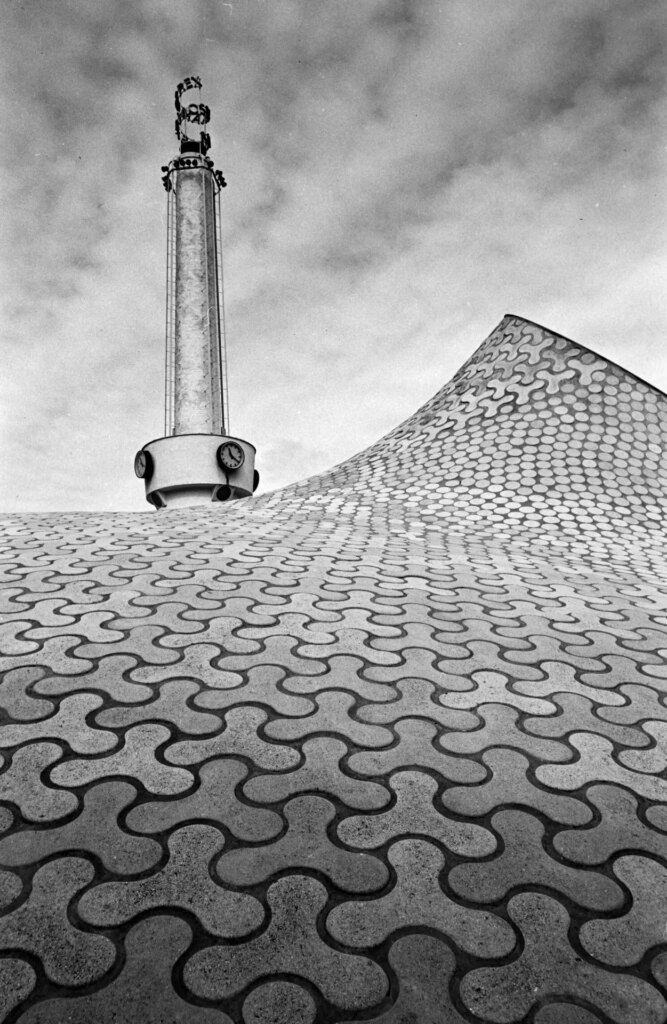
Then I figured I could improve the composition by moving to the right, to show the elliptical window (below). But I actually like the first photo more.
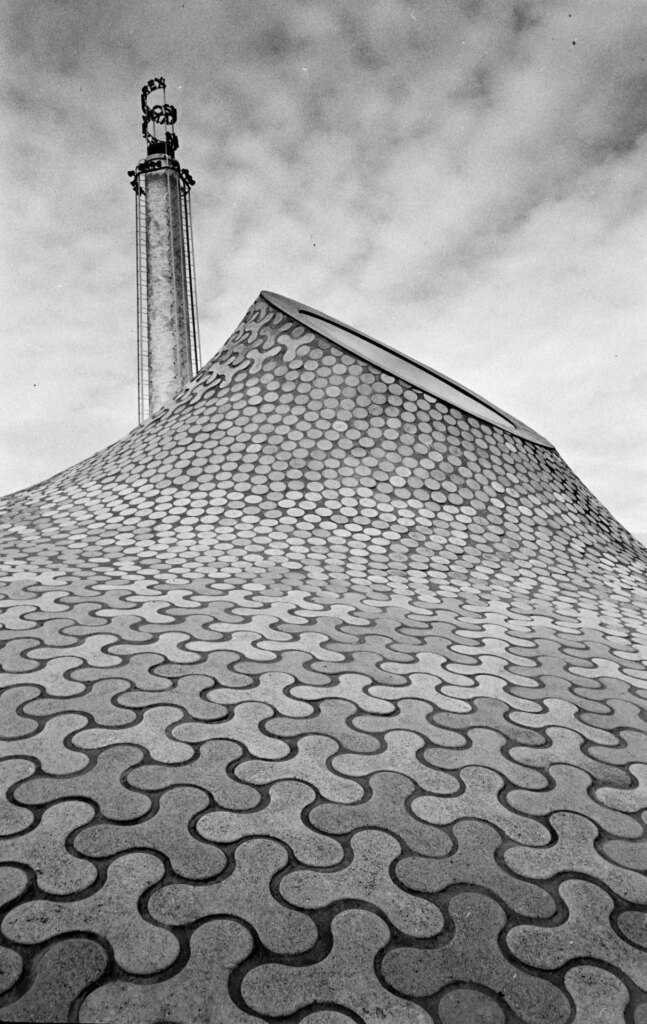
Film Ferrania history
Since P30 is a relatively uncommon film, I thought I’d include some historical information and background for anyone who might be interested.
Ferrania was originally founded in 1923, as a company producing film, photographic paper and even cameras. In the post-war period, their B&W Pancro 30 (P30) motion-picture film was used by famous directors including Federico Fellini and Vittorio De Sica. If you’re interested in delving deeper into the history, A Brief History of Ferrania (PDF) is a good resource.
Following the rise of digital, Ferrania struggled, restructuring in 2006, with the film factory finally ending operations in 2010. In 2013, the former Ferrania research lab, as well as some of their equipment and documentation, were acquired by a new company, FILM Ferrania s.r.l. Much of this money was raised through a Kickstarter campaign. I wasn’t among the backers and haven’t followed the story closely, but my understanding is that although the campaign exceeded its funding target, there were unforeseen hurdles, which meant the initial promises – e.g. of a colour reversal film – were not fulfilled, and quite a few backers were left unhappy (see this Photrio thread, for example).
Anyhow, in 2017, they released a 35mm B&W film, Ferrania P30 Alpha, which was literally an alpha (trial) version. In December 2019, they released P30 (the final version) which, according to their website, is “engineered with modernized versions of original chemicals, based on the historic cinema formula of the mid-20th century”. This is the film that I used for the photos in this post. Subsequently, Ferrania have also released P30 in 120 format, as well as Orto (an ISO 50 orthochromatic B&W film). I have not tried either of these films… yet.
Final thoughts
I enjoyed my time in Finland – both the conference in Joensuu, and the few days I spent with my friend in Helsinki – and Ferrania P30 was a good way to record those memories, as film often is. As I say, I didn’t set out to review the film, nor did I shoot it in any controlled or scientific way. If I had a theme in mind, it was the sumea project, which didn’t materialise. But I enjoyed my P30 experience. A few frames – not shown here – are significantly underexposed, but that could probably have been avoided by rating the film at ISO 50, or perhaps more careful metering. Otherwise, I’m happy with how the photos turned out, and I hope you got a sense of what to expect if you decide to try this film yourself.
For more of my work, feel free to check out my Instagram.
Share this post:
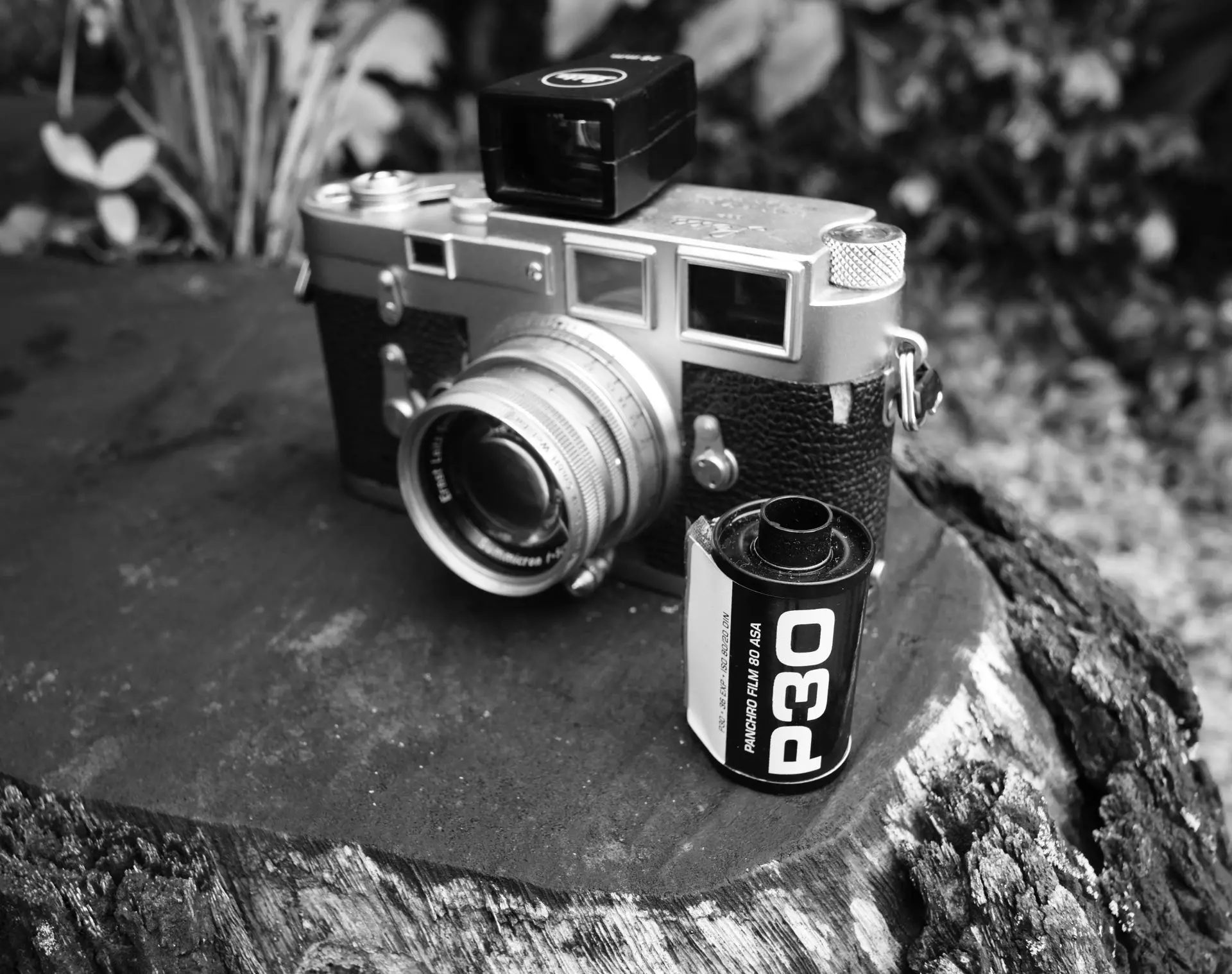
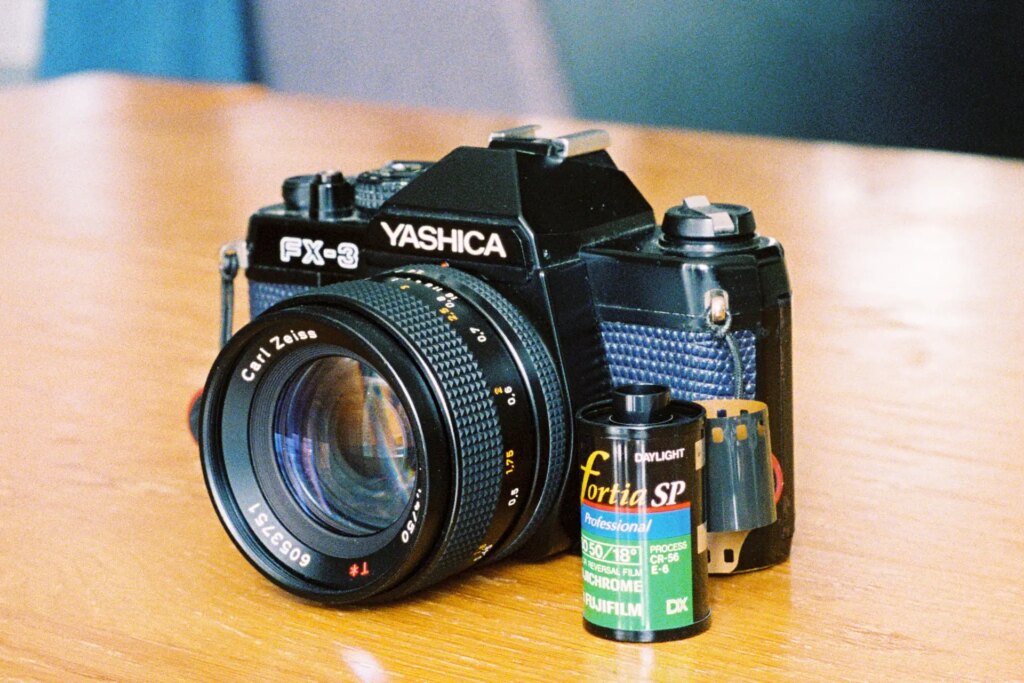
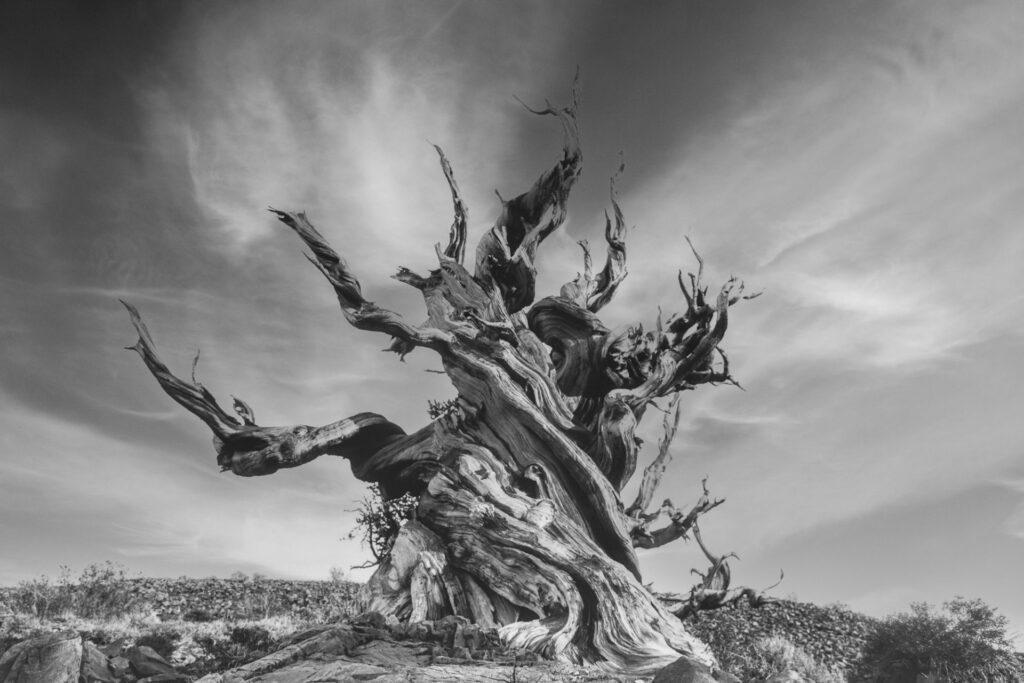
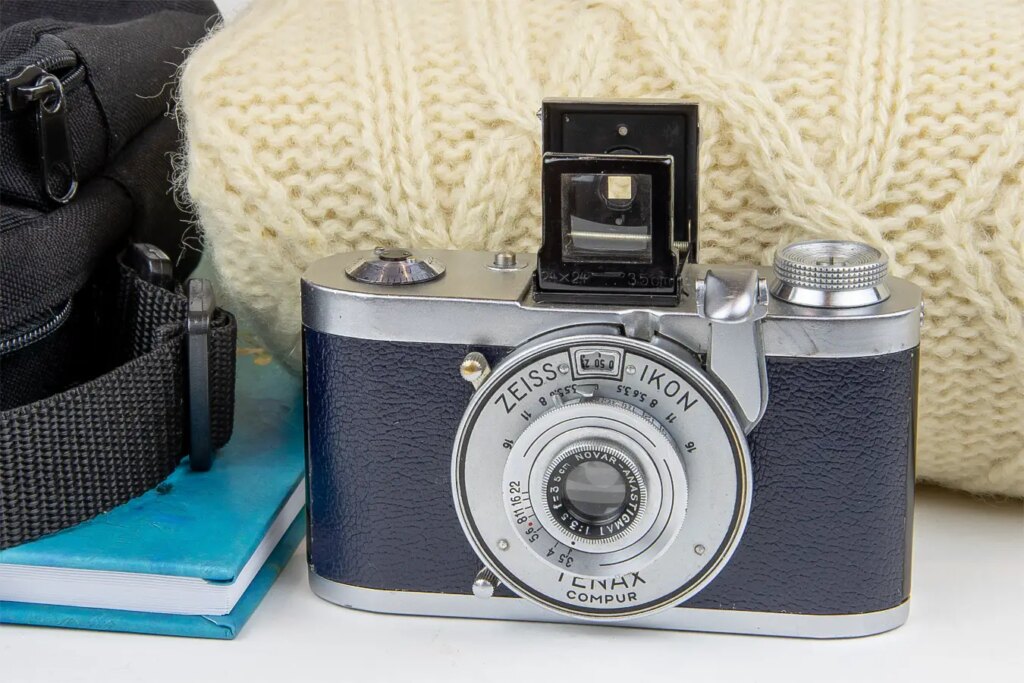
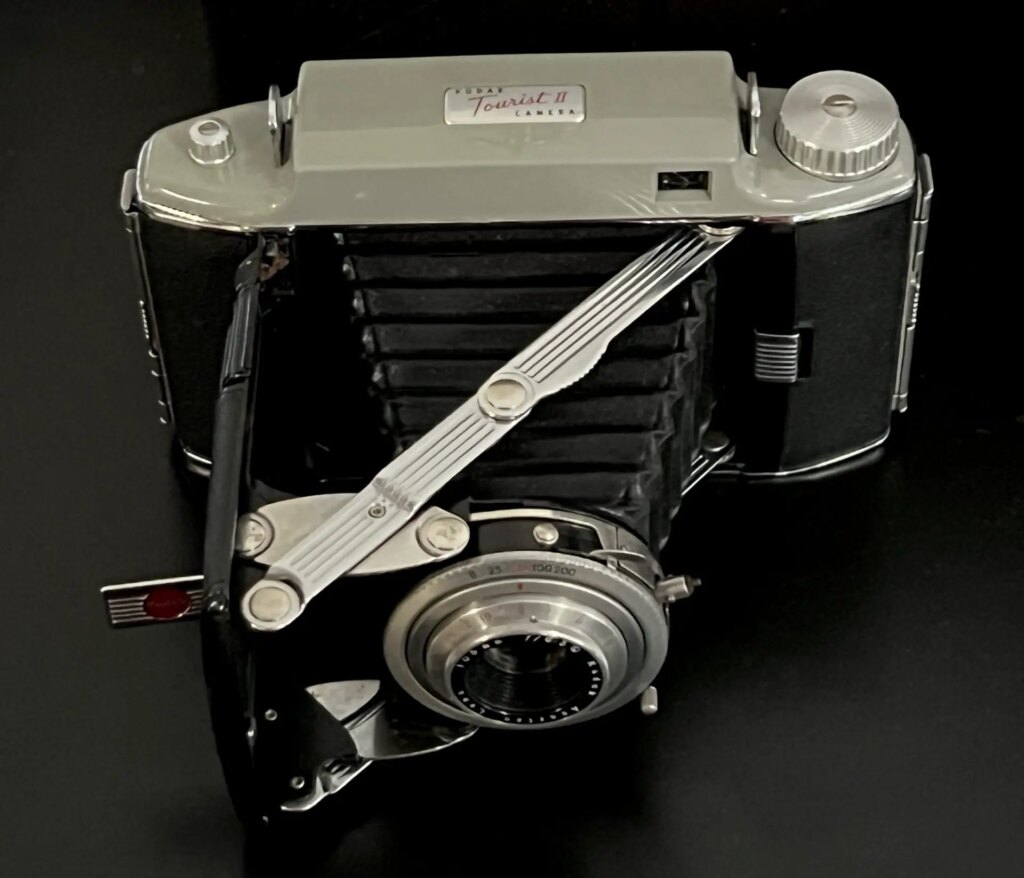




Comments
David G. on Film Ferrania P30 in Finland with a Leica M3
Comment posted: 07/12/2023
Comment posted: 07/12/2023
Comment posted: 07/12/2023
Jukka Reimola on Film Ferrania P30 in Finland with a Leica M3
Comment posted: 07/12/2023
Your photos look very pleasant to me, even if you weren´t happy with the bokeh. I especially like the 28mm pics (I very much prefer the 28 & 35 mils myself).
I´ve been curious about the Ferrania, might try it sometime. Looks like a nice film to me.
BTW, you could also say "epäterävä" or "epätarkka", when referring to bokeh...
Comment posted: 07/12/2023
Eric on Film Ferrania P30 in Finland with a Leica M3
Comment posted: 07/12/2023
Comment posted: 07/12/2023
Richard on Film Ferrania P30 in Finland with a Leica M3
Comment posted: 08/12/2023
Comment posted: 08/12/2023
Thomas Lotrecchiano on Film Ferrania P30 in Finland with a Leica M3
Comment posted: 09/12/2023
Comment posted: 09/12/2023
Rasmus on Film Ferrania P30 in Finland with a Leica M3
Comment posted: 18/12/2023